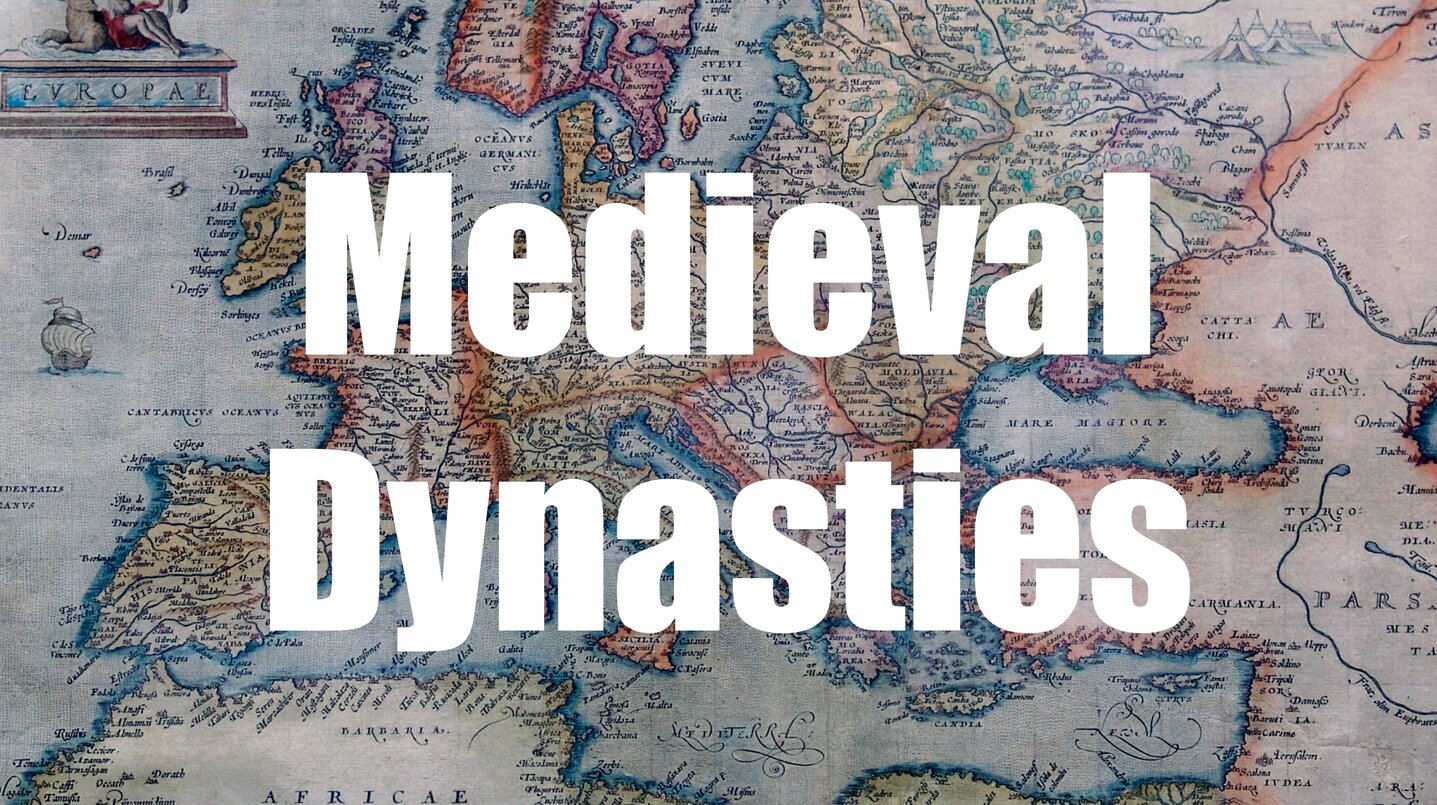There are some cases where the dynasty was using the name that we call them now. For example, the Yuan Dynasty in China comes from their official name of Yuán Cháo, which means ‘Great Yuan’. There is also the strange example of the Plantagenets – a dynasty that ruled England from 1154 to 1485. They were not called that until the mid-fifteenth century, when Richard, Duke of York adopted ‘Plante Genest’ as his family name. It comes from a nickname that was given to his Great, Great, Great, Great, Great, Great Grandfather, Geoffrey, Count of Anjou. The nickname was apparently from the Latin words for the broom plant, and now all of Geoffrey’s descendants are referred to by that family name.
However, most medieval dynasties got their name long after the Middle Ages ended, created by historians to help readers understand various political changes and eras. French historians coined the terms Merovingians, Carolingians and Capetians for three of their most important dynasties. The Merovingians were named for Merovech, who was said to be the father of the fifth-century Frankish leader Childeric I – whether or not he was a real person is a matter of debate.
The Carolingians come from the name Charles, which in Latin was spelled Carolus. However, there is some disagreement over which Charles they are referring to: either Charles Martel, the Frankish official who was the de facto ruler of the Merovingian dynasty, or his grandson Charlemagne (Charles the Great).
Then there were the Capetians, who ruled France from 987 to 1328. Historians picked this name for its founder Hugh Capet – his last name was just a nickname meaning ‘cape’. Interestingly, during their own time this family was called the “third race” of French kings, coming after the Merovingians and Carolingians.
Here are how some other dynasties got their names:
Ottoman – this Turkoman dynasty began in the year 1299 with the rise of Osman Ghazi, who ruled a small tribe located in northwestern Anatolia. By the end of the 14th century his descendants would greatly expand their lands, created an empire officially known as Devlet-i ʿAlīye-yi ʿOsmānīye, which means ‘Sublime Ottoman State’.
Habsburg – one of the most important dynasties of the late medieval and early modern periods, they also got their name from a fortress – Habsburg Castle – which their family built in the early eleventh century. A couple of generations later the family took on the title of Count of Habsburg.
Piast – the first rulers of Poland were named after the descendants of Piast the Wheelwright, who may have lived in the ninth century.
Hohenstaufen – this family of German rulers was named after one of the fortresses, Hohenstaufen Castle.
Macedonian dynasty – this extended family ruled the Byzantine Empire from 867 to 1056. They got their name from the family’s founder Basil I, who was called Basil the Macedonian. However, historians now believe it was more likely that he came from Armenian origins.
Rurik – the ruling dynasty of Kievan Rus’ owes its name to a Varangian chieftain named Rurik (in Old Norse his name was Hrøríkʀ), who is semi-legendary. He was invited to rule over the city of Novgorod in 862 – his descedants would continue to rule in Russia, Ukraine and other parts of Eastern Europe for the next 20 generations.
Solomonic – Yekuno Amlak led a revolt against the rulers of Ethiopia in the year 1270, and became the new emperor of the African state. His successors created the story that Yekuno was a descendant of the Biblical couple King Solomon and the Queen of Sheba, which allowed the ruling family to claim a special connection to Christianity. They were able to rule Ethiopia until 1974.
Joseon – Korea would change dynastic rulers in the year 1392, with a military commander named Yi Seong-gye coming to power. In the following year he changed his dynasty’s name to Joseon, which means ‘Pristine Morning.’ It was the name of the first semi-mythical kingdom on the Korean peninsula, which existed back in ancient times.
Abbasid – this dynasty, which ruled from 750 to 1258, came from the name for the clan Banu Abbas, which itself was founded by Abbas ibn Abd al-Muttalib, an uncle to the Prophet Muhammad.
Árpád – Árpád was the leader of a confederacy of Magyar tribes who came to Hungary in the late ninth century. His descendants would establish a dynasty that ruled the central European kingdom until 1301.
Bruce – Robert the Bruce became of King of Scotland in 1306. The name Bruce can be traced back to a local lord who ruled the lands of Brix in France. Members of this family came to England and then Scotland in the 12th century.











